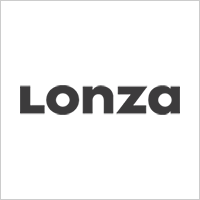Lonza MycoAlert Mycoplasma Detection Kits

One of the most common contaminants present in cell culture laboratories are mycoplasma. A conservative estimate states that between 15-35% of all continuous cell cultures are contaminated with mycoplasma1, some estimates are even higher (up to 80% in some countries2).
Mycoplasmas belong to the family Mollicutes, which includes Acholeplasma, Ureaplasma and other species; however, the term Mycoplasma is most often used as a cover-all'. More than 180 species have been identified of which 20 distinct Mycoplasma and Acholeplasma species from human, bovine and swine have been isolated from cell culture. There are 6 species that account for 95% of all mycoplasma infections (M.orale, M.arginii, M.fermentans, M.salivarum, M.hyorhinis and A.laidlawii). Mycoplasmas are widespread in nature as parasites of humans, mammals, reptiles, insects and plants. They are the smallest and simplest self-replicating prokaryotes, they lack a rigid cell wall and are surrounded by a single plasma membrane. They are dependent on their hosts for many nutrients as their biosynthetic capabilities are limited.
Typical routes of infection are cross-contamination from untested infected cells (e.g. via aerosols generated during pipetting, use of same media bottles, handling of more than one cell type at one time), contaminated materials, contaminated donor tissue (<1%) or direct infection from the researcher. The primary source is normally cross-contamination from infected cultures. Mycoplasma grow slowly and do not kill the cells outright but affect various cellular parameters. Thus, mycoplasma contaminations can seriously impact the reliability, reproducibility, and consistency of experimental results, representing a major problem for basic research as well as for the manufacturing of bioproducts. Standard testing for mycoplasma is an important quality control.

MycoAlert™
Detect mycoplasma cell culture contaminants in less than 20 minutes.

MycoAlert PLUS™
The next generation MycoAlert kit providing higher light output for a more sensitive assay.

MycoZap™ Mycoplasma Elimination Reagent
Eliminate mycoplasma contamination in as few as four days.
Mycoplasma References
- Drexler HG, Uphof CC (2002). Cytotechnology 39: 75–90
- Koshimizu K, Kotani H (1981). In: Procedures for the Isolation and Identification of Human, Animal and Plant Mycoplasmas (Nakamura, M., ed.), Saikon, Tokyo, 87-102
- Gong H et al. (1999). Biochem Biophys Res Comm 261: 10-14
- Ben-Menachem G et al. (2001). FEMS Microbiol Letters 201: 157-162
- McGarrity MF et al. (1984). In Vitro 20: 1-18
- Sokolova IA et al. (1998). Immunol Cell Biol 76: 526-534
- Doersen CJ, Stanbridge EJ (1981). Mol Cell Biol 1: 321-329
- Stanbridge EJ (1971). Bacteriological Reviews 35): 206-227
- Darin N et al. (2003). BMC Biochem 4:15
- Rottem S (2003). Physiol Rev 83: 417-432
- Miller C et al.(2003). Biotechniques 35:812-814